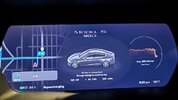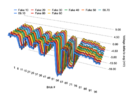indeed
as with many things in life there are of course no guarantees. but that’s where applied mathematics and the wealth of data that we pump up to the cloud come into play. running that data through our software tools, we get to a minimum spec of less than two standard deviations that all our packs are required to meet (and in turn is used to certified a pack for a given range - 210+ miles, 240+ miles, 250+ miles - based on that distribution criteria).
the reality is that a failed brick is literally so pathological that it lies completely outside the rest of the capacity distribution. it’s not even a question of being long-tail - statistically, it’s out past Pluto when it fails. of course, you can then quantify any borderline or ‘at-risk’ cells and exclude them from the population if needed. it’s simply a matter of how tight you want that capacity distribution - our minimum spec is < 2 std dev, often we end up with < 1 std dev.
oh, and have we mentioned that we like data!
as with many things in life there are of course no guarantees. but that’s where applied mathematics and the wealth of data that we pump up to the cloud come into play. running that data through our software tools, we get to a minimum spec of less than two standard deviations that all our packs are required to meet (and in turn is used to certified a pack for a given range - 210+ miles, 240+ miles, 250+ miles - based on that distribution criteria).
the reality is that a failed brick is literally so pathological that it lies completely outside the rest of the capacity distribution. it’s not even a question of being long-tail - statistically, it’s out past Pluto when it fails. of course, you can then quantify any borderline or ‘at-risk’ cells and exclude them from the population if needed. it’s simply a matter of how tight you want that capacity distribution - our minimum spec is < 2 std dev, often we end up with < 1 std dev.
oh, and have we mentioned that we like data!
Last edited:





